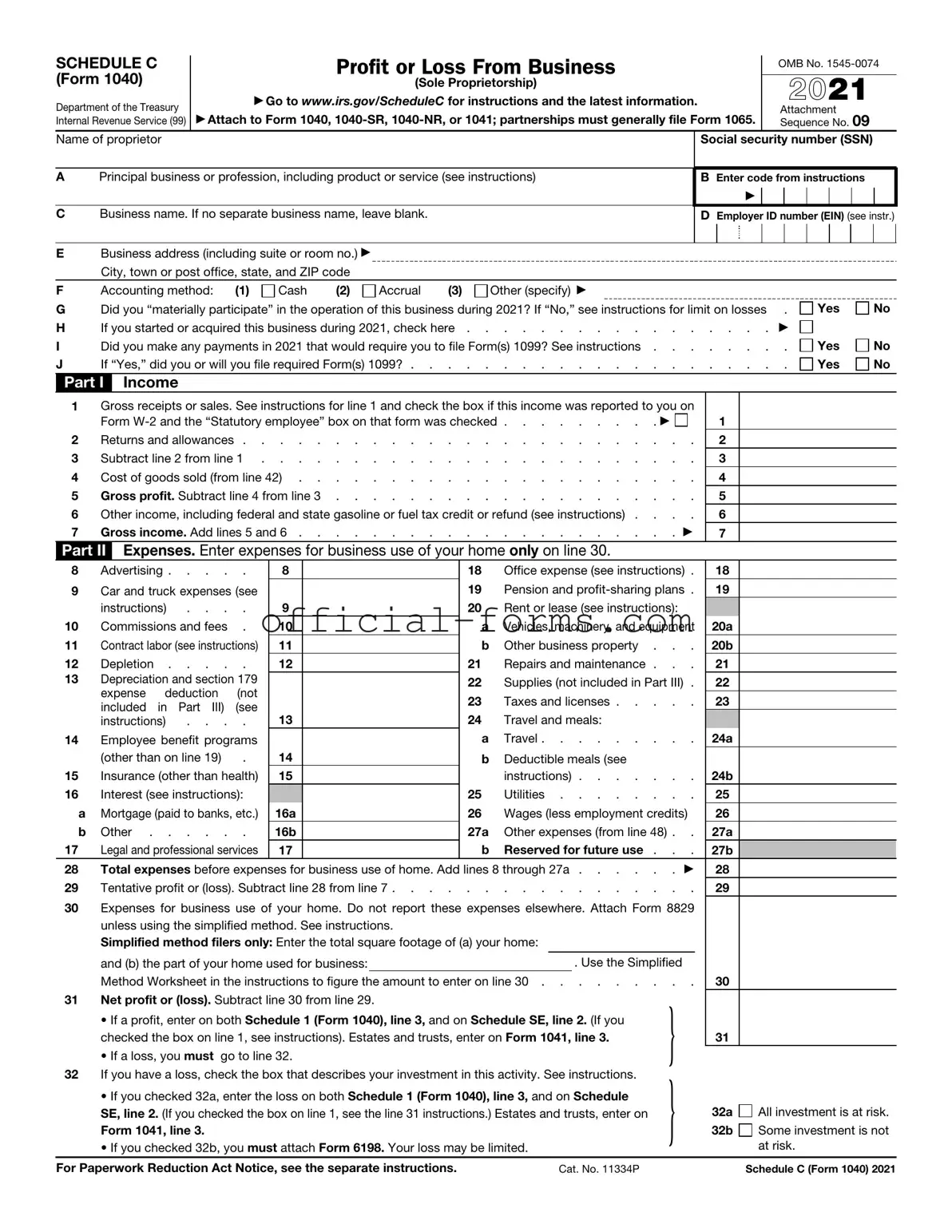Filling out the IRS Schedule C (Form 1040) can be a daunting task for many small business owners and self-employed individuals. Mistakes in this form can lead to delays in processing, potential audits, or even penalties. One common error is failing to report all income. It is crucial to include every source of income, whether it comes from sales, services, or other business activities. Neglecting to report even small amounts can raise red flags with the IRS.
Another frequent mistake involves misclassifying expenses. It is essential to categorize expenses correctly to ensure that deductions are applied accurately. For instance, mixing personal expenses with business expenses can lead to complications. All expenses must be directly related to the business to qualify for deductions. Keeping meticulous records can help avoid this pitfall.
Many individuals also overlook the importance of maintaining proper documentation. Receipts, invoices, and bank statements serve as evidence for the expenses claimed. Without this documentation, it can be challenging to substantiate claims during an audit. Keeping organized records throughout the year simplifies the process of filling out the Schedule C form.
Another mistake often made is not taking advantage of all available deductions. Many business owners are unaware of specific deductions that can significantly reduce their taxable income. For example, home office deductions, vehicle expenses, and depreciation on equipment can all provide substantial tax relief. Researching available deductions can yield considerable savings.
Inaccurate calculations can also lead to errors on the Schedule C form. Simple arithmetic mistakes can result in incorrect income or expense totals, potentially affecting the overall tax liability. Double-checking figures and using reliable accounting software can help minimize this risk.
Failing to sign and date the form is another oversight that can lead to complications. A Schedule C that is not signed is considered incomplete. This simple step is crucial for ensuring that the form is valid and accepted by the IRS.
Lastly, submitting the form late can result in penalties and interest charges. Understanding the deadlines for filing taxes is vital. Planning ahead and allowing ample time to gather necessary information can help avoid last-minute stress and ensure timely submission.
